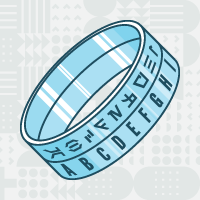It’s a cold afternoon in January, and a woman’s thoughts turn to drinking.
Well, why not? I mean, something has to take the chill off the old bones, right? And OK, I should be technically “working” for the next few hours. And then I should probably be “watching the children.” But that all sounds so provincial. A cocktail would be so refreshing.
No, don’t worry. No intervention is necessary. For better or worse, I’ll be stone-cold sober for the foreseeable future. But I’ve been thinking about wine marketing of late. Historically, if I rack my brain, the only vino ads that immediately spring to mind are Orson Welles’ old Ernest & Julio Gallo spots — and when those aired, I was a bit too young to be a connoisseur.
Wine was first made more than 7,400 years ago, according to “Wine and Society: The Social and Cultural Context of a Drink,” by Steve Charters. It’s an interesting but very academic text one definitely couldn’t wade through with a buzz.
Since then, the promotion of wine has surely become more direct, thanks to electronic media. For example, judging is now under way for the American Wine Blogs Awards, which will honor the best of the Web’s 400 or so wine blogs.
Still, can you really experience a fine vintage online? Ask any wine snob and they’ll tell you that enjoying a fine merlot or chardonnay is a full sensory experience. You need to taste it, you need to smell it…but can you hear it?
No, of course not. But that doesn’t stop Goosecross Cellars from engaging in a bit of “warm telemarketing” to customers in the winter, when people aren’t likely to travel to Napa Valley for a tasting.
David Topper, owner of the Yountville, CA winery, says the calls are one of the ways it keeps in touch. “I’m a little cautious to say this, but I believe it so firmly I don’t mind: To us, the relationship with the customer is more important than the wines we produce.”
The calls are conducted by Goosecross employees, often tasting-room staffers who met the customers when they visited the winery. The calls — all to people who gave their permission to be contacted — may promote a specific wine, or may just serve to say “Hi! Here’s what’s happening in Napa.”
The winery — which ships 10,000 cases per year, 98% sold direct — has a customer file of 25,000 to 30,000 names, which it also reaches by direct mail and case stuffers.
And Goosecross is communicating with wine lovers online via Napa Valley Wine Radio, the world’s first podcast produced by a winery. The biweekly program has about 2,000 subscribers.
Sounds good to me. Does it come with free refills?
 Network
Network

